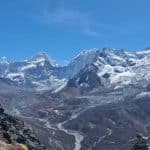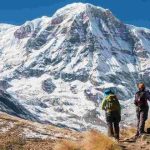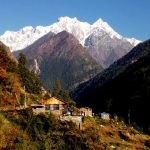Altitude of Mountain Sickness (AMS)
What is Acute mountain sickness?
Hikers, Trekkers and adventurers who travel to high altitudes can sometimes develop acute mountain sickness or high altitude pulmonary edema. Altitude sickness can occur in some people as low as 8,000 feet, but serious symptoms do not usually occur until over 12,000 feet. Even then it is not the height that is important, rather the speed in which you ascended to that altitude. Acute mountain sickness (AMS) is actually more common in fit young men because they are more likely to attempt a rapid ascent by racing up the mountain like some indestructible super hero! As a general rule, it is far safer (and more enjoyable) to avoid altitude sickness by planning a sensible itinerary that allows for gradual acclimatization to altitude as you ascend, (you can race back down as fast as you like!)
The symptoms of Mild AMS include:
- Headache
- Nausea & Dizziness
- Loss of appetite
- Fatigue
- Shortness of breath
- Disturbed sleep
- General feeling of malaise
Prevention of Acute Mountain Sickness.
- If possible, don’t fly or drive to high altitude. Start below 3,000 meters (10,000 feet) and walk up.
- If you do fly or drive, do not overexert yourself or move higher for the first 24 hours.
- If you go above 3,000 meters (10,000 feet), only increase your altitude by 300 meters (1,000 feet) per day, and for every 900 meters (3,000 feet) of elevation gained, take a rest day to acclimatize.
- Climb high and sleep low! You can climb more than 300 meters (1,000 feet) in a day as long as you come back down and sleep at a lower altitude.
- If you begin to show symptoms of moderate altitude sickness, don’t go higher until symptoms decrease.
- If symptoms increase, go down, down, down!
- Keep in mind that different people will acclimatize at different rates. Make sure everyone in your party is properly acclimatized before going any higher.
- Stay properly hydrated. Acclimatization is often accompanied by fluid loss, so you need to drink lots of fluids to remain properly hydrated (at least four to six liters per day). Urine output should be copious and clear to pale yellow.
- Take it easy and don’t overexert yourself when you first get up to altitude. But, light activity during the day is better than sleeping because respiration decreases during sleep, exacerbating the symptoms.
- Avoid tobacco, alcohol and other depressant drugs including, barbiturates, tranquilizers, sleeping pills and opiates such as dihydro codeine. These further decrease the respiratory drive during sleep resulting in a worsening of symptoms.
- Eat a high calorie diet while at altitude.
Remember: Acclimatization is inhibited by overexertion, dehydration, and alcohol
———————————————————————————————————————–
More information about Trekking in Nepal.
———————————————————–
Type of Trekking
——————————-
Trekking Permit
—————————————-
Best Time for Trekking in Nepal
—————————————–
Trekking Guide & Porter
Our Top Offer
Why booking with us ?
- Fully Locally Owned Company
- Quality Of Service and Competitive price
- Highly Professional Staff
- Flexible and customization trip itinerary
- 100% Customer satisfaction
Need help?
Nepal: 00977-9841273869 whatsapp: 00977-984127386924 hour customer service




